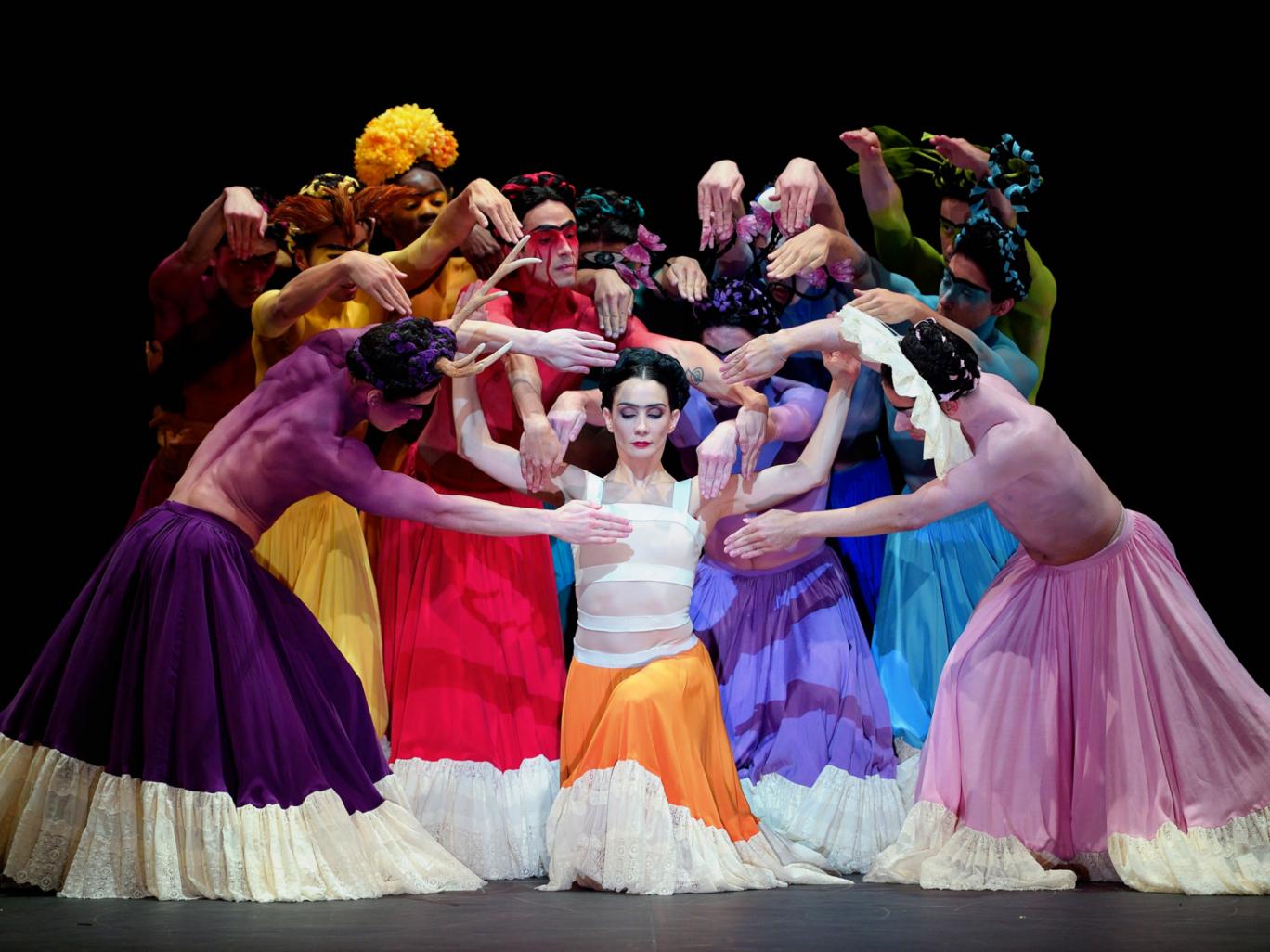‘Could you tell these were by women choreographers?’ asked my neighbour during an interval of English National Ballet’s She Said. Good question. How would you know?Could you tell that the opera I saw the following evening – Lucia di Lammermoor – was directed by a woman, Katie Mitchell?
Good question – but impossible. Start slapping labels on aesthetic qualities – feminine/masculine – and you’re part of the categorising problem. Could you guess which work was by a Belgian-Columbian, Chinese, Canadian or British artist? Why would you even try?
Impossible question – but interesting, because ballet and opera are both devilled by the choking fog of femininity: leering and admiring and ignoring the individual. Look at the pretty ballerina, how she twirls and spins. Hear the lovely singer, how she trills and dies for our delight. Clearing the air is aesthetically and ethically pressing.
So how about these four works? Annabelle Lopez Ochoa’s Broken Wings, about Frida Kahlo; M-Dao, Yabin Wang’s Medea myth; Aszure Barton’s multifarious Fantastic Beings (all in the pioneering She Said); and Mitchell’s Lucia? Female creators or not? If I hadn’t known I might have guessed, respectively: yes, yes-ish, maybe, fuck yeah.
M-Dao (yes-ish) is a limpid distillation of Medea (the heroine wears just one pointe shoe, an inside-outsider at odds with her world), while I’m excited to see more of Barton’s (maybe) zippy movement vocabulary – kinked, playful, pushing the speed of the moves up and down. Ochoa’s bio-ballet (yes!) not only feels like the confident real deal, but a thrilling rebuttal of the masculine lens.
Sideways
Art history, although teasing territory, hasn’t quite worked out for Liam Scarlett (Walter Sickert) or Christopher Wheeldon (John Singer Sargent). Male artists with female subjects remain in the crossfire of the male gaze. But female artist with a female subject – herself – means Ochoa’s Kahlo hums on a different dynamic. Diego Rivera (blundering around in fat suit) is almost incidental: the true tension is between Kahlo and her talent.
As danced by Tamara Rojo (pictured top by Laurent Liotardo), Kahlo oscillates between doubt and flourish, with an edge of hunger. The stage fills with her own multicoloured avatars, danced by bare-chested men in vivid body paint, long skirts and scrolling headgear. Kahlo marshalls them with assurance: in one glorious moment, she doesn’t deign to swish her own booty at Rivera, but gets the Fridas to do it on her behalf. She dances with a spirit animal, the nervy, antlered deer. The Mexican skeletons that grin through every day of the dead celebration also further and frustrate her – break her wings and help her fly. It’s a fascinating staging of how ambition and imagination realise themselves.
This combined frankness and sideways-ness is fascinating. Ochoa (working with theatre director Nancy Meckler) doesn’t apologise, or fetishise or victimise the artist. Just puts her to work, because the work – not the romance – is the thing.
Dressing and redressing
For Lucia di Lammermoor, love is, if not her whole existence, extremely time-consuming. Mitchell and the extraordinary soprano Diana Damrau make her isolated desperation the point of a split-stage production, which, like Broken Wings, allows a subversively sideways view. Even when Lucia doesn’t sing, her lonely, anxious experience is before us.
The split focus means the production is continuously, almost unbearably tense. Lucia prepares for an assignation even as her brother howls about vengeance. She rides her illicit chap while her room is searched. As the men chunter on, she discovers she’s pregnant, or suffers a miscarriage, or messily, lengthily kills her unwanted bridegroom. Guess what? Men asserting their rights, sometimes a whole chorus of them, is less interesting than the unspooling of a single woman’s fate. (But this redirected gaze is more interesting for men too – Ludovic Tézier makes Lucia’s brother an unconscionable bully, but also a desperately vulnerable one, his every order fringed by fear.)
Damrau spends much of the evening dressing or undressing or redressing – clambering into the approved swaddle of Victorian femininity, or daringly pulling on a man’s outfit for a secret assignation. Mitchell foregrounds the contest to get her into a wedding dress – a shotgun wedding unlike any other. Damrau daringly sends her voice out in ample assertion, or thins it to a wire, while Donizetti’s orchestration – the tremulous harp and glass harmonica – suddenly sounds as uncannily original as it must have done at the 1835 premiere.
In Mitchell’s current production of Sarah Kane’s Cleansed at the National Theatre, Michelle Terry adopts the role of the central consciousness, refracting the terror and cruelty she sees (there is torture, there is mutilation). Throughout the meat-grinder horrors, I kept my eyes on her face – holding onto something human, to her pooling concern. Lucia’s servant Alisa (Rachael Lloyd, terrific) has little to sing, but Mitchell uses her similarly – a near-constant presence to remind us that this shouldn’t be, a cowed but necessary protest in a world committed to unnecessary cruelty. Looking again, looking around.
Follow David on Twitter at @mrdavidjays


Leave a Reply